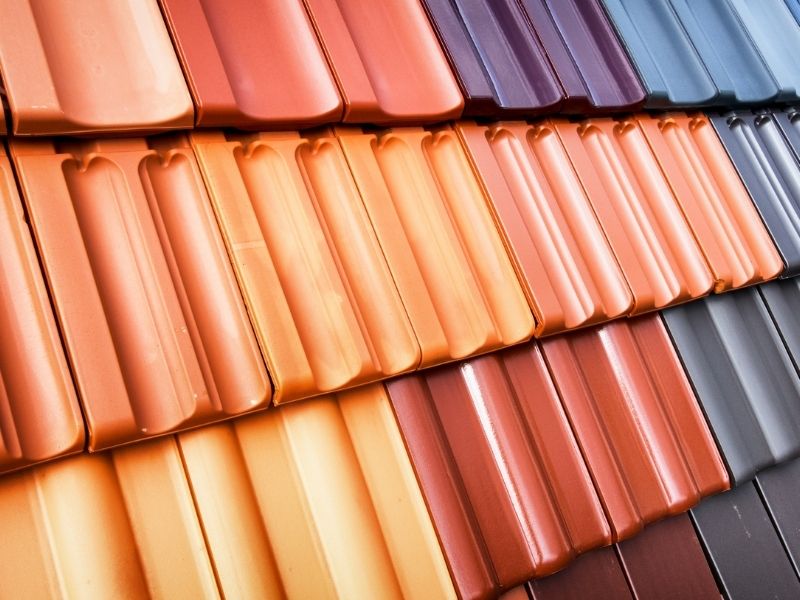A roof plays a huge role in protecting you and your family from harsh weather such as winds and other outdoor elements. Of course, a good roof not only improves your living standard but also increases the resale value. However, roofing is difficult without the skills and tools. Therefore, it’s advisable to leave the roofing process to an expert because a professional knows the ideal roof pitch and roofing materials.
Sites such as smithroofingpros and similar services make it easier for homeowners to access quality goods and services. Of course, this saves you a considerable amount of time and money. However, it also guarantees a long-lasting roof.
The Essentials Of Roof Pitch And Roofing Materials
The following feature discusses what you need to know about roofing as a homeowner. We explain what a roof pitch is and factors that influence roofing materials. If this intrigue you, we invite you to continue reading to learn more about roof pitch and roofing materials.

What is a roof pitch?
A roof pitch is one of the most visible aspects of your house’s roof. It refers to a measuring system used to calculate the roof’s steepness. The measurement is expressed as a ratio of the roof’s vertical rise to its run. If the vertical rise is higher, the roof will be steeper. The run is the size of the horizontal span, usually measured as a standard 12 inches.
If you don’t know how to compute the roof pitch figures, invite an expert to help you conduct the measurements on the pitch of your roof.
What are the Types of roof pitches?
The following are types of roof pitches you might consider for your house. They include:
⎆ Low roof pitch
A roof with a low pitch has a slope of between 2:12 and 4:12. This means that for every 12 inches of horizontal run, the roof rises vertically by two to four inches. A low-pitch roof may appear completely flat; however, it still drains water. This is important because if water accumulates on the roof, it leads to damages and repair bills.
Low-pitched roofs are normally installations in residential and commercial set-ups, although they’re commonly associated with business establishments. Commercial buildings choose shallow roofs to ensure maximum use of the spaces to improve their revenue.
A low-pitched roof is efficient in heating and cooling your house. It also limits extra air, making it easier for your house to maintain a favorable room temperature throughout the seasons. We do not advise to go with roofs with a low pitch if you’re building in a region with regular downpours. Unfortunately, the rate of drain sometimes does not keep up with the downpour.
⎆ Medium roof pitch.
Medium roof pitch is in use in many residential buildings. Interestingly, the conventional slope roof has a pitch of between 4:12 and 9:12. The slope also allows water to flow freely, which protects your roof from water stress. An average person easily walks on these roofs when performing maintenance.
However, it’s important to wear the right protective gear when climbing your roof. Of course, it’s best to allow an expert to perform check-ups or maintenance. It’s safer because they have the right skills and tools to maneuver around your roof.
⎆ High roof pitch.
A high-pitch roof has a slope of more than 9:12 inches. It includes 10:12, 11:12, 12:12, and up to the plumb vertical plane.
A high-pitch roof has benefits:
Reduced chances of accumulated roof water.
Unlike low-pitched roofs, roofs with a high pitch type direct any moisture directly to the gutters, thanks to gravity. Unfortunately, pooling water affects your roof, leading to leaks. Therefore, a high-pitch roof saves costly repairs and disruption of daily life.
Enjoy more storage space.
Use the large space under a steep roof pitch for additional storage. However, installing a storage room for permanent or temporary use is easier.
Despite the benefits, there are several challenges with a high roof pitch. For example, a high pitch roof is extremely steep. Therefore, it’s hard to install and maintain roofing materials. Plus, roof installation of a high pitch roof is a more dangerous job. So, a roofing company may charge you more to maintain and install roofing materials.
What factors might determine a roof pitch?
Going with a certain roof pitch entails considering several factors depending on your structure. It’s important to take note of them to make the appropriate choice. These factors include the following:
⎆ Weather conditions.
Depending on where you live, roofs get exposure to several weather conditions. These climatic elements include snow, downpour, and winds.
For instance, if you live where there are heavy instances of snows and hailstorms, choose a roof pitch of more than 4:12 inches. In fact, doing so makes it easier for snow to fall off the roof and protect it from water damage.
⎆ Maintenance considerations.
Maintenance plays a huge role in improving the life span of your roof. Aside from that, the type of pitch you choose determines how often you conduct regular maintenance practices.
As mentioned above, high roof pitches may be extremely steep which makes it hard to conduct routine check-ups or maintenance jobs. On the other hand, it might be easier to walk on a low roof pitch, thus simplifying maintenance practices.
Of course, we recommend that you conduct extensive research to identify an ideal roof pitch for your house.
What do you need to know about roofing materials?
There are a lot of materials for roof building from which to select. The type of materials you choose is responsible for maintaining and protecting your home’s exteriors. To guarantee that your roof would last for years, it’s advised that you consider various roofing materials. So, take the time to learn about each one’s advantages before making a decision.
Following below are just some of the most common kinds of roofing materials in the market:
⎆ Asphalt shingles.
Roofs that come with asphalt shingles come with an easy installation process. Moreover, they have more than 25 years of shelf life. So, choose from several color options to ensure it meets your aesthetic expectations. Additionally, other manufacturers may incorporate zinc or copper granules to prevent algae growth.
⎆ Slate tiles.
Another roofing material to consider is slate tiles. These roofing materials are unique, attractive, and durable, with a life of up to 150 years. In addition, they’re available in different sizes and colors. Therefore, it’s easy to purchase slate tiles that match your décor for a uniform look.
One of the major drawbacks of slate tiles is that they might be hard to install as they’re prone to breaking. Also, these roofing materials are costly and leave a huge dent in your wallet.
⎆ Standing seam metal.
Standing seam metal refers to a series of metal panels locked together at the seams. This allows the metal panels to expand and contract freely with temperature changes.
In recent years, the popularity of metal roofing is growing exponentially because it’s durable and resistant. It also generally lasts longer than asphalt and other roofing materials.
On the flip side, metal roofing might be a costly investment upfront. Accordingly, hiring a certified roofing company to conduct the roofing process is important. As a result, it saves you from making mistakes that cost you more in the long run.
What factors may influence roofing materials?
Choosing the right roofing material is a daunting task for novices and beginners. So, below are factors to consider when choosing a roofing material. Those factors include the following:
⎆ Material weight.
Each roofing material has a specific weight. For this reason, it’s vital to choose a material your home structure easily supports. Selecting a heavy material compromises the integrity of your house. Also, ensure purchase of your roofing materials from a reputable supplier to guarantee products with the right weight and other specifications.
⎆ Weather.
The local weather determines the type of roofing material you choose. Each of the materials has a different level of durability to weather elements. Talk to an expert to develop a deeper insight into the best roofing material recommended for use in your locality.
⎆ Energy efficiency.
Installing energy-efficient roofing materials play a huge role in reducing your monthly energy bills. Some materials such as asphalt may reflect away the sun’s rays, thus making it easier for your space to maintain a room temperature without running your air-conditioning (ac) system 24/7.
⎆ Budget.
Your budget influences the type of roofing material you install. The cost of each material differs depending on the quality and energy efficiency. Apart from the cost, consider other expenses for roofing installation such as labor, permits, and maintenance.
⎆ Regulation compliance.
Each administration has rules and regulations surrounding roofing design and materials. So, first visit the local authority to understand the rules in your area. This is important to do before purchasing roofing material for your property.
Does roof pitch affect your roofing materials options?
Your roof pitch also influences the type of roofing materials you select to work with. The following is a rundown of the recommended materials for each roof pitch:
Low roof pitches
Low roof pitches are well-known among many homeowners across the country. The most preferred materials to use for low-pitched roofs are standing seam metal or tar and gravel. These materials easily drain runoff water.
Average roof pitches
Average roof pitches are said to require a material that resists excess water pooling. So, we recommend materials such as slate tiles, asphalt shingles, or wood slates.
High roof pitches
High roof pitches entail the need for light and durable materials.
In conclusion.
As a homeowner, understanding the ideal roof pitch improves your roof’s safety. It also improves the aesthetic look of your lovely home. Moreover, it also increases its resale value!
Meanwhile, roofing materials protect the exterior of your house. Several factors influence your roof materials options. We recommend that you conduct extensive research for peace of mind as you select your pitch and roofing materials. If you have any questions or suggestions, we always love to hear from you in the comments below. Also below are links to more fantastic articles about ALL things DESIGN for your home or business.
Images Courtesy of Canva.
Other Posts You Might Enjoy:
The Aesthetics of a Rooftop Landscaping Projects
How to Wildlife-Proof Your Porch
4 Of The Most Common Types of Roofing Materials





